1. Know What’s Going on in There
The foundation of caring for a horse and keeping him healthy begins with what goes into his body. Nutrition is something every horse owner should take some time to learn about, since the digestive tract of a horse is nothing like that of a human.
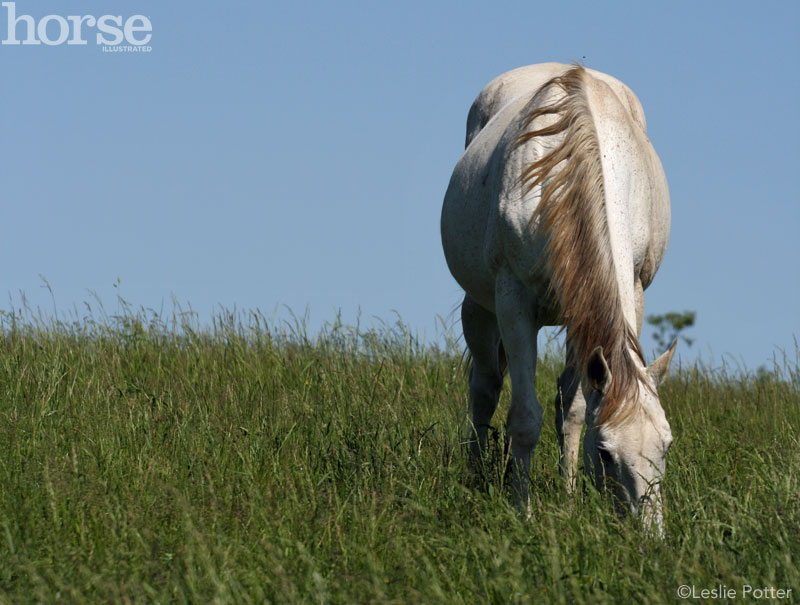
2. Feed Frequently
A horse’s digestive health is dependent on frequent meals to keep the stomach and hindgut busy throughout the day. An empty stomach is a major cause of ulcers in horses, which are very common. By feeding him three to four times a day (or more) instead of just one or two, you will keep his stomach full most of the time and give the microbes in his hindgut constant work to do, which keeps him healthy.
Feeding small meals is especially important when it comes to grain, which is consumed much faster than hay. A large amount will pass through the small intestine without being fully broken down, leaking starches and sugars to the large intestine. This overwhelms the microbes and creates toxic byproducts that can lead to colic or laminitis, a very painful inflammation of the hooves.
3. Introduce Changes Gradually
Having delicate microbes present means that sudden changes to the diet can be disastrous to the horse’s system. A sudden change in pH or mass killing of certain bacteria populations can happen if the diet changes too suddenly, leading to the release of endotoxins, which can trigger laminitis. A horse should have at least two weeks to gradually switch to a new diet.
4. Forage, Forage, Forage
The simplest way to feed horses is by providing lots of high-quality forage, which includes either hay or pasture grass. Calories, protein, vitamins and minerals can be obtained 100 percent via forage (plus a salt block) in lightly worked horses if the hay or grass is of excellent quality. The time spent consuming forage is good for the horse, keeping him busy and less likely to develop vices such as cribbing, wood chewing, weaving or stall-walking. The earlier hay is harvested, the higher in protein and other nutrients it is, in addition to being more tasty with less waste. Hay that is cut late in maturity will have thick, woody stems that horses prefer to avoid and leave behind. Weeds also make for poor hay quality, and can be toxic and/or unpalatable.
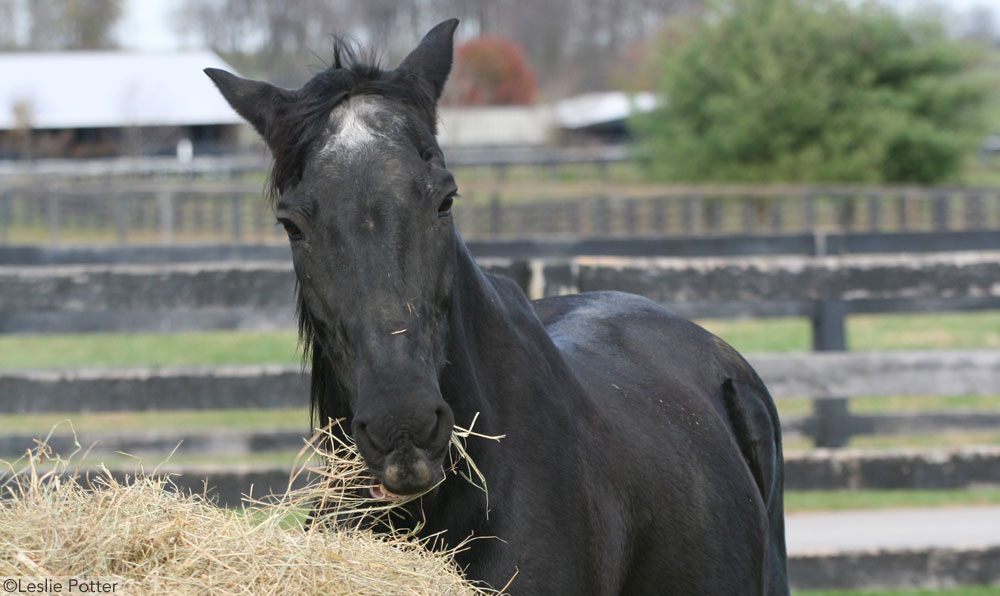
There are two types of forage: grass and legumes. Orchardgrass and timothy are two high-growing grasses often baled for hay. Grasses and legumes are both appropriate for feeding horses, but legumes are significantly higher in protein and calcium. However, horses do not need large amounts of protein unless they are lactating or young and growing quickly (particularly weanlings). Clover and alfalfa are the two most common legumes fed to horses in hay or pasture form. Alfalfa hay, however, can contain blister beetles, which produce a chemical that is toxic and potentially deadly to horses. Bales should be checked for beetles before purchase.
Red clover is a nutritious legume often interspersed into grass pastures, but it may contain a different type of fungus that leads to excessive drooling and slobbering. This is not thought to be harmful to most horses, just somewhat undesirable to the humans who interact with the horse.
Care should be taken with any horse when introducing lush pasture. This should never be done suddenly or all at once. Instead, gradually increase his grazing time each day to allow the horse’s system to get used to the rich nutrients without developing colic or laminitis. The number of horses a pasture can support is usually no more than one per acre, and in arid conditions, this number can be as low as one horse per two to four acres (or more). Regular mowing should be a part of pasture care, as it controls weeds and keeps plants in an earlier maturity stage. As plants become mature and reach seed head, they contain less nutrients and are less palatable to horses. If pastures are of poor quality, contain many weeds, or are overgrazed (particularly in winter), hay or other forage alternatives must be provided to supply energy and nutrients.
5. Know Your Alternatives
Haylage (bagged, chopped hay), beet pulp, hay cubes and “complete” pellets are good sources of fiber when hay and pasture are not available. Though nutritious, these do not contain as much long-stem material as regular forage, which satisfies the horse’s need for nearly constant chewing. Complete pellets are useful for horses with hay allergies or in the case of older equines with poor (or no) teeth. Beet pulp should be soaked for at least two hours before feeding to prevent it from expanding in the stomach, but the fiber it contains is of excellent quality and is readily digested by the hindgut microbes for energy. In addition, beet pulp is free of the dust found in hay, which helps horses with respiratory problems. However, it is low in vitamins and certain minerals, so careful supplementation must be added to the diet if beet pulp is used as a primary source of fiber.
6. Grain: Don’t Overdo Convenience
Although mixed grains are readily available in large quantities at most feed stores, they should not account for more than 25 to 50 percent of the diet. If a horse needs more calories even when consuming grain, forage quality should be upgraded or fat added. Hay meals for horses living in stalls should be maximized and fed at least one hour before a grain meal. Be mindful that a scoop of one feed might not be equal in weight to a scoop of another, so feed according to weight and not volume. Always feed grain in small portions (less than 6 pounds).
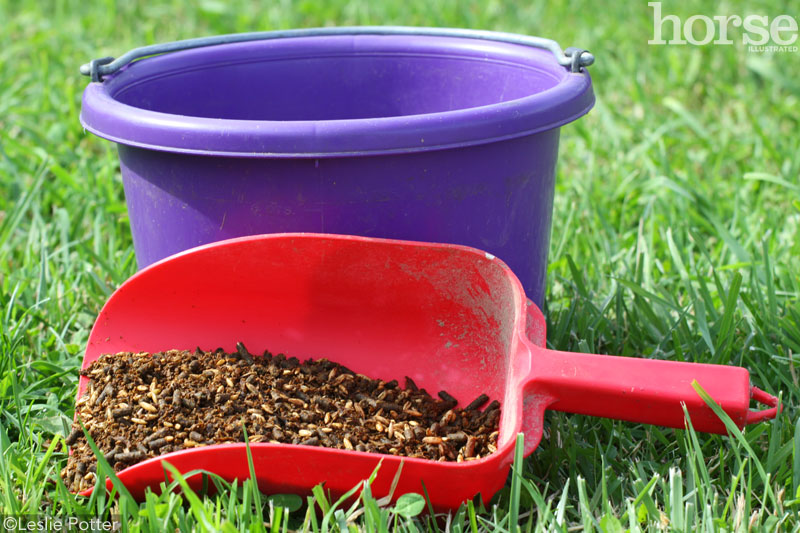
Grain mixtures containing a balanced ration of vitamins and minerals are usually the simplest to feed. These commercial blends are available in three forms: texturized, pelleted and extruded (or a combination of more than one). “Sweet feed” refers to texturized grain mix often containing molasses, which holds the feed together and adds flavor. Pelleting is done so that horses will not sort out parts of the feed they don’t like, but this may also allow them to eat too fast. This can be remedied by feeding somewhat more expensive extruded feed, which adds steam during the pelleting process to increase the volume of the feed and slow down the speed at which the horse can consume it.
7. Provide Plenty of Clean, Fresh Water
The importance of clean drinking water cannot be overlooked. Horses consume 6-12 gallons per day in cooler weather, depending on the amount of exercise they do. In hot weather, water intake can quadruple. In winter, heaters might be needed in buckets or outdoor automatic waterers to ensure that horses keep drinking.
Waterers should be checked every day, and buckets should be washed and refilled to be certain that horses have free access to clean water at all times.
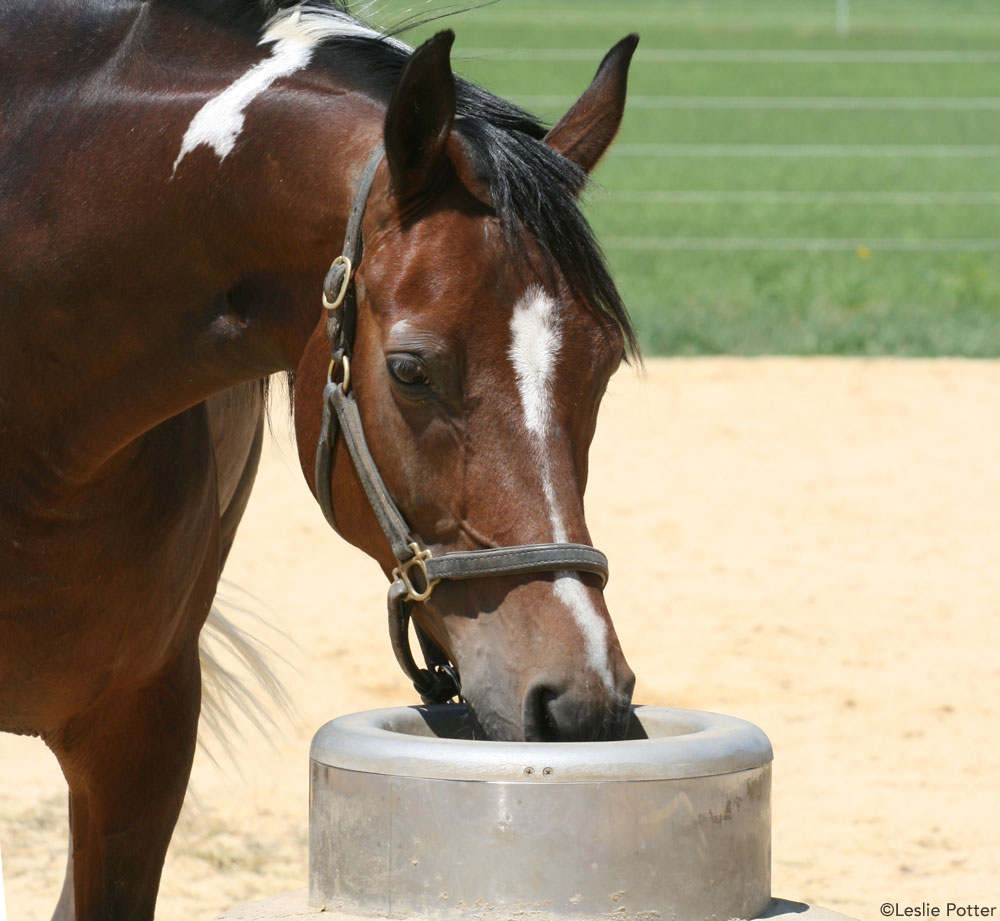
8. Keep an Eye on Condition
Most horses in light to moderate work can meet caloric and nutrient requirements solely from high-quality forage. A general rule with hay is to feed 1.5 to 2.0 percent of body weight (purchasing a hay scale and body weight tape are important investments). For an average 1,000-pound horse, this equates to 15 to 20 pounds of hay per day.
The easiest way to tell whether your horse is too fat, too thin or just right is to assess his body condition with the commonly used scoring system ranging from 1 (extremely emaciated) to 9 (extremely obese). Anywhere from a 4 to a 7 is considered an acceptable score for most horses. Generally, ribs should be easy to feel but not easy to see. If the horse is carrying a winter coat, use your hands to determine where fleshy or bony areas exist.
If your horse appears too thin, you will want to increase his calorie consumption until he reaches a suitable weight. Particularly in cold weather and when exposed to wind and rain, horses burn more calories to keep warm. Hay is the ideal winter feed, since the activity of the hindgut microbes provides a “free” heat source when compared to grain, which does not.
If a horse is overweight, high-calorie feeds should be removed from the diet, but roughage can still be fed free-choice. You may want to switch to a more mature hay or one containing mostly grass if he has been gaining weight on alfalfa or an alfalfa/grass mixture. Horses that gain excessive weight while grazing may need to be moved to dry lots and fed carefully weighed amounts of hay or wear grazing muzzles to lessen the amount of lush grass they can eat.
Exercise is a much healthier way to help your horse shed pounds than starvation or skipping meals, which leads to ulcers, behavioral problems and metabolic disorders.
9. Fat Can be a Good Thing
Another way to increase the calorie density of feed without overloading grain is by using a pre-mixed feed that is high in fat (8-10 percent). You can also mix vegetable oil into grain or beet pulp. Oil can be safely fed one cup per meal or more, and is well accepted by horses.
When feeding oil, start at a low level and gradually increase to the desired level over a period of two weeks. Corn and soybean oil are commonly used because of availability and cost, but must be stored in a cool area to avoid spoilage. A fat-supplemented diet has the added advantage of keeping the coat sleek and glossy and decreasing excitability compared to high-starch/high-sugar sweet feeds.
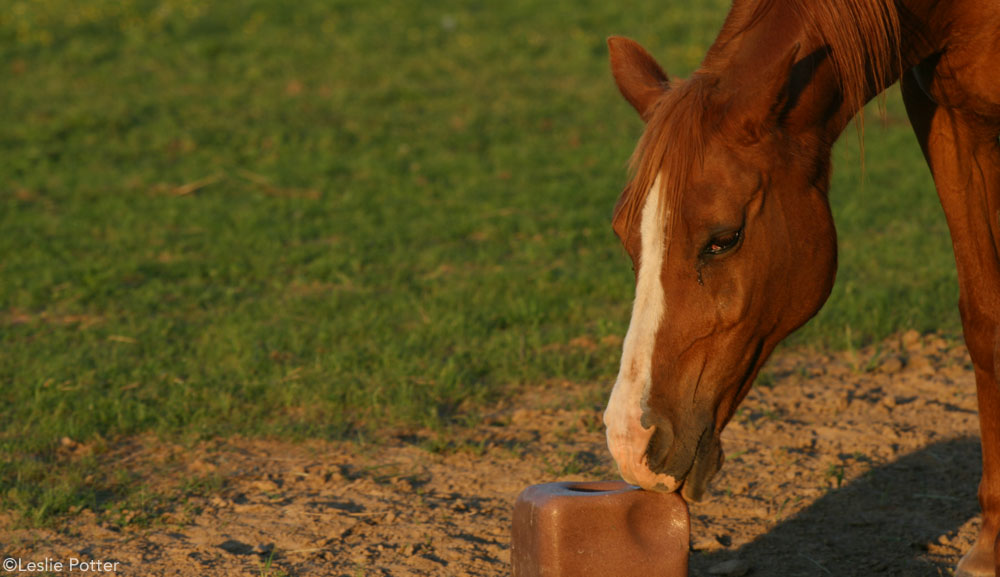
10. Don’t Overdo it: Vitamins, Minerals and Supplements
While many supplements exist on the feed store shelves, you must know what you’re putting in before adding it. Feeding vitamins and minerals beyond the horse’s requirement doesn’t usually help, and might be toxic in large amounts. Most commercial grains contain a full spectrum of balanced vitamins and minerals, so no other supplementation is necessary.
Salt is an important supplement for horses eating just hay or pasture, but the requirement can usually be met by providing free access to a salt block.
With a basic understanding of how your horse’s digestive system works and what his needs are, you should be able to walk into the feed store with confidence. When in doubt, always consult your veterinarian.
Finally, keep an eye on your horse, and you’ll know if your feed program is working or is ready for revision.


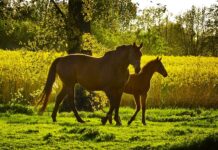


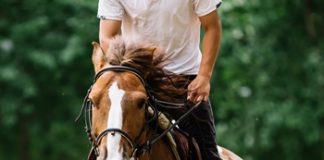

Thanks for the great tips!!
Great information.
This was a great article. It gave all the information simply. It was easy to read and made common sense. thank you
thanks! i needed a new feeding scedual
Thank you for the information in this article. Its assured me that the way I feed my horses is the best. In the summer they get a small amount of grain with corn oil to get supplements into them and they have 24/7 access to good grass pasture. In the winter we feed the same grain with plenty of good Timothy/Orchard grass hay. They’re fat, happy and healthy so I already knew it was working.
Good info!
Having a horse w/insulin resistance [BCS 7], I respectfully disagree about feeding grain, esp. to idle or lightly worked horses. Some research is showing that lifelong intake of carbs in the form of grain, carrots, and other treats may push a horse into a metabolic disorder. My understanding is that horses did not have access to grain in the wild and are not equipped to utilize it.
Your advice to not underfeed hay hits home w/me. My boy has been gaining weight “on air”. I recently began feeding more teff grass hay and he is slowly dropping a few lbs. He is MUCH calmer and not bolting his feed.
Great article!
Hello,
I have been adding oat bran oil or vegetable oil to my horses food. Can I use olive oil? I was told mineral oil (was used when he had colic)actually blocks absorption of nutrients.
that is sooo cool i am going to follow it
Great article!!!!!
Thankyou for the helpful information
Interesting. Several of the 10 facts I already knew but most I didn’t. I’m always on the lookout for information about feeding, hay, and pastures.
I don’t agree with pre-packaged horse feeds. Every pre-packaged horse feed I have looked into has wheat or grain hulls as first or primary ingredient. This is nothing but filler. Personally, what I have found does the best for my horses (they get pasture/hay and mineral salt block freely) is: Beet pulp, oat/alfalfa cubes, 3 tbs each of honey and molasses, 1/4 cup of apple cider vinegar, 1-2 lbs of whole oats and a supplement for coat/hooves. Their hooves, coats, and overall health is very good. Since they are easy keepers, I feed this only 3-5 times a week. I will never go back to pre packaged horse feeds. My horses do so much better now.
This is a really good article. The important thing to remember is that a horse needs about 2-2.5% of their body weight a day in dry matter feedstuffs. There are a lot of people that formulate their own feed, which is fine, but they need to make sure they’re actually feeding to meet the horse’s requirements. I recommend that individuals use the National Research Council’s guidelines for formulating their own feed, because you may be doing more harm than good! Also, if your horse stays fat on just hay/pasture alone, a ration balancer could be used to make sure they are meeting their lysine, phosphorus, calcium, vitamin, mineral, etc. requirements! I use a ration balancer on one of my horses and they are fairly inexpensive.